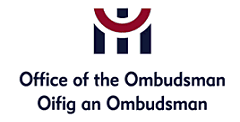On July 30th, 2019 Ombudsman Peter Tyndall published a report entitled ‘Fair Recovery: How complaints helped to improve the Department of Employment Affairs and Social Protection’s handling of overpayments’ highlighting how the Department dealt with concerns about the methods of recovery of overpayments which had been made to social welfare recipients. The report also discusses how intervention by the Office of the Ombudsman led to the improvement of outcomes for claimants, as well as the development of better decision making processes.
While the amount of total debt related to 192,000 individuals, this report dealt with a sample of 33 randomly selected cases, covering various social welfare payments including Jobseekers Allowance, Supplementary Welfare Allowance, pensions, and others. The Office of the Ombudsman also requested that 50% of the cases should involve old overpayments, i.e. cases that exceeded the term of 6 years since the overpayment had accrued, which, according to the Statue of Limitations Act 1957, could not be pursued by the DEASP thereafter, unless the debtors were found to have wilfully concealed information or mislead the Department.
A general finding was that the majority of cases handled in the report indicated fault not with the claimant, but with the DEASP and how its officers handled cases. However, despite the indications of mistakes and negligence on the part of the Department, claimants had been pursued for many years and repayments had been recovered from their social welfare payments. Often, the rates of repayment were exorbitant and not calculated with “poverty proofing” in mind. In some cases, the issue of overpayment had not been raised with the claimant in a timely manner, but was raised years later when the individual was of the age to claim a State pension, or had made an application to claim a State pension.
Documentation
On page 16, the Ombudsman gives an overview of issues of concerns and what he considers weakness in the processes of recovering overpayments. He indicates that many of the overpayment case files lacked documentation including: paperwork delineating explanations for decision making; records of communications/meeting with claimants regarding the overpayments; and calculations of overpayments.
A particularly concerning issue was that “many of the case files reviewed did not contain evidence that claimants were informed of their right of appeal when they were notified of the revised decision in their case.” This is, of course, an oversight on the part of the DEASP in ensuring due diligence and fairness in their approach to legitimately recovering overpayments.
Individual complaints and systemic issues
The Ombudsman discussed the Department’s practices that were of concern to him including: overpayments arising by errors made by DEASP staff; huge delays in the timely communicating of older debt amounts to claimants; bad record keeping; a lack of poverty proofing when calculating payments; and a lack of uniformity in decision making.
In addressing the issue of poverty proofing, the Ombudsman makes the comment that “it is the requirement of the part of a public body to ensure its actions in recovering debts do not leave the debtor in abject poverty.” In adhering to this, in both cases dealing with poverty proofing, intervention by the Office of the Ombudsman brought weekly repayments down by over 50% out of concern that the weekly rate was causing financial hardship.
Reflecting on the report, there would seem to be a general lack of uniformity in calculating rates of repayments and in considering the burden that repayment rates can put on an individual and indeed their family. The Ombudsman states that he has provided an “informal guide” as to how to keep poverty proofing in mind when considering cases, but the lack of an established method of calculation or consideration indicates a more general lack of proper training for deciding officers.
Regarding legacy debt, the cases examined brought up different complaints from claimants, and arguments as to why they shouldn’t be required to pay the debts raised against them. Amongst the arguments were: a lack of knowledge of the circumstances around how the debt arose or how the debt was sustained; inadequate communication from the Department; upholding of the debt by the Department despite mistakes being made on their end; and the inability to afford the repayments.
In one case study regarding legacy debt, the debtor was not informed until 2013 of an overpayment dating back to 2001. She was not informed until she became entitled to a State pension. The debt was eventually written off in light of the delay in recovering repayment.
In two case studies regarding record keeping, significant faults in the processes of record keeping and documentation retention were highlighted. In both case files, documentation justifying the calculation of repayments was missing including: information on how the payments arose in the first place; and documentation indicating regular communication between the Department and the debtor.
When discussing his findings, Mr. Tyndall also commented on the presence of ‘wilful intent’ in the sample cases: “I should make the point that the vast majority of cases did not suggest evidence of “wilful intent” on the part of the complainant.”
The report details some of the measures that have been implemented in order to improve the processes of decision making including training initiatives. The Office of the Ombudsman also commends the Department for its engagement with them in addressing their concerns.
In conclusion, this report represents a very positive step towards a more transparent and streamlined service to be provided to those availing of Social Welfare schemes and payments. An essential part of a system dealing with those who are vulnerable is the fostering of an attitude of respect and dignity, as is promoted in this report.
For the full report, please see: https://www.ombudsman.ie/publications/reports/fair-recovery/
